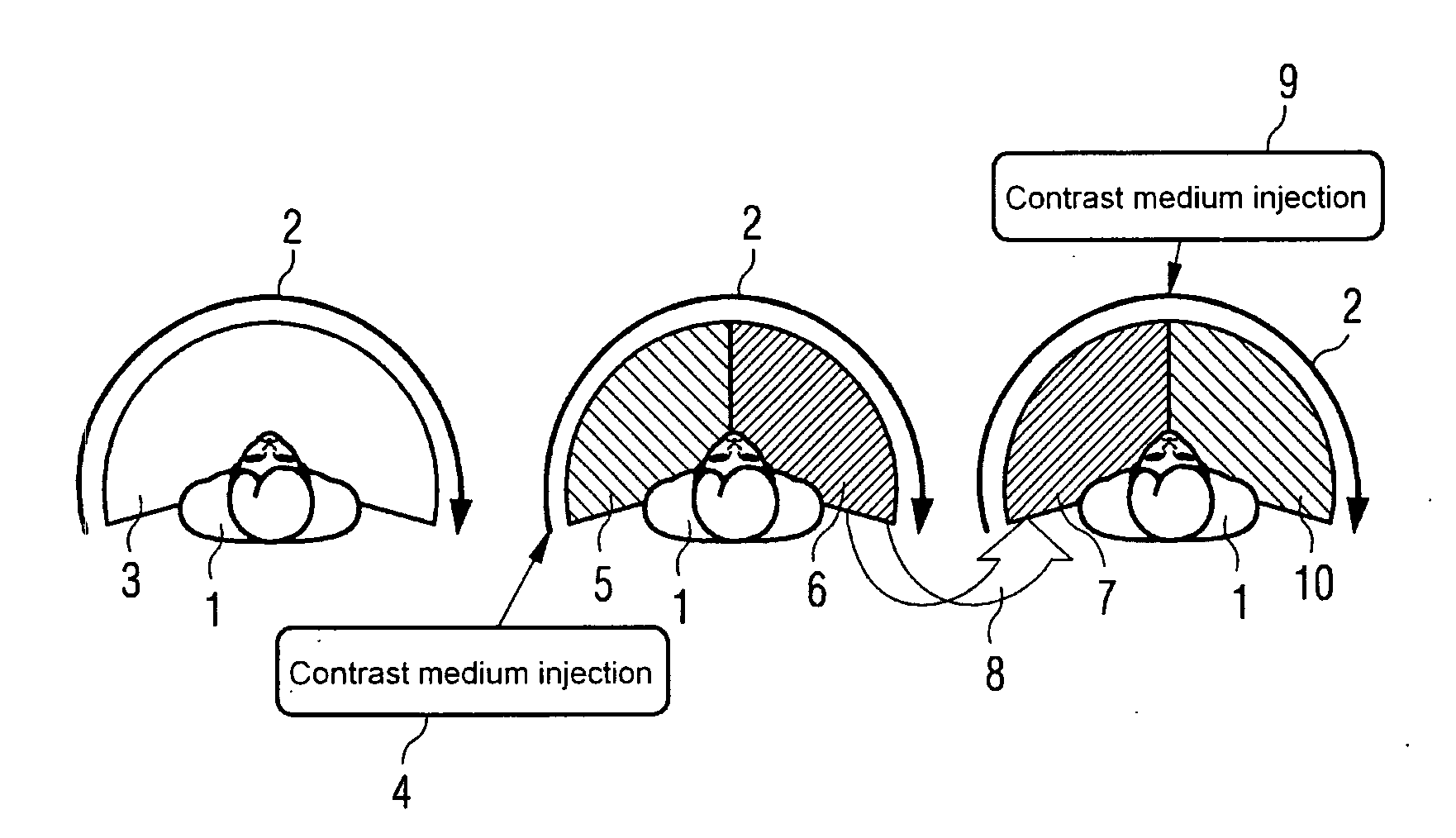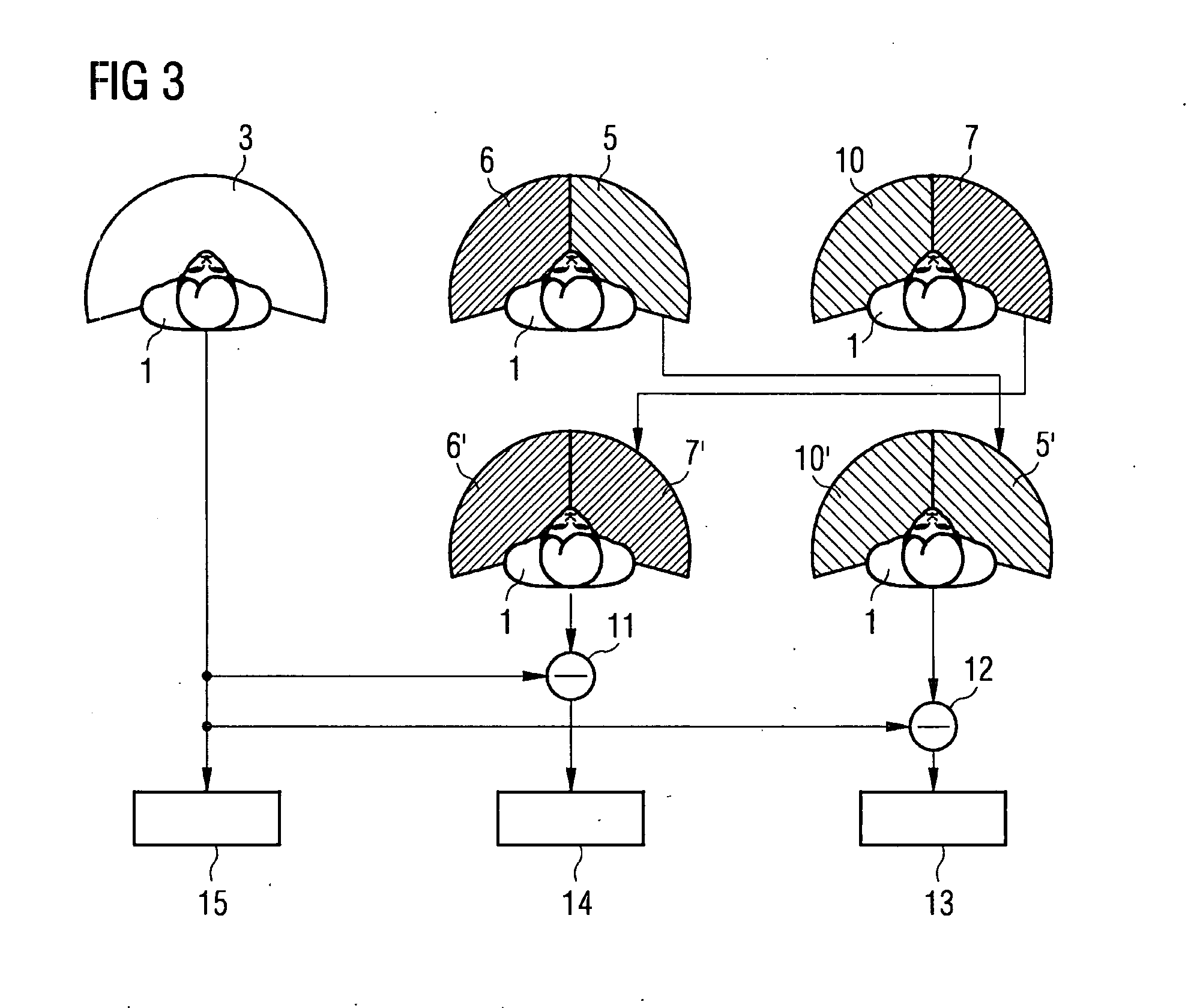Method and device for separate three-dimensional presentation of arteries and veins in a part of body
a three-dimensional presentation and artery technology, applied in the field of three-dimensional presentation of arteries and/or veins in a part of the body, can solve the problem of not being able to make a sufficiently clear distinction between arterial and venous vessels
- Summary
- Abstract
- Description
- Claims
- Application Information
AI Technical Summary
Benefits of technology
Problems solved by technology
Method used
Image
Examples
Embodiment Construction
[0041]FIG. 1 describes the inventive method when using a C-arm angiograph which can only perform scanning runs in one direction.
[0042]The left-hand part of FIG. 1 shows a body positioned for examination, such as a patient 1, in cross-section, arrow 2 shows the direction of scanning of the C-arm angiograph used and sector 3 shows the detected projection angle of the masking run. Here the entire part of the body is recorded and represented in accordance with the options provided by the angiograph used. The middle part of FIG. 1 shows the first filling run, in which, at the beginning of the second scanning run in the same scanning direction 2, a contrast medium is injected into or adjacent to the vessel to be examined. FIG. 1 illustrates the point in time of the contrast medium injection 4. The cross-hatched area 5 is the area of the filling run, in which the arterial phase of the vessel contrasting occurs. After the end of this phase 5, during which the contrast medium has reached the...
PUM
 Login to View More
Login to View More Abstract
Description
Claims
Application Information
 Login to View More
Login to View More - R&D
- Intellectual Property
- Life Sciences
- Materials
- Tech Scout
- Unparalleled Data Quality
- Higher Quality Content
- 60% Fewer Hallucinations
Browse by: Latest US Patents, China's latest patents, Technical Efficacy Thesaurus, Application Domain, Technology Topic, Popular Technical Reports.
© 2025 PatSnap. All rights reserved.Legal|Privacy policy|Modern Slavery Act Transparency Statement|Sitemap|About US| Contact US: help@patsnap.com



